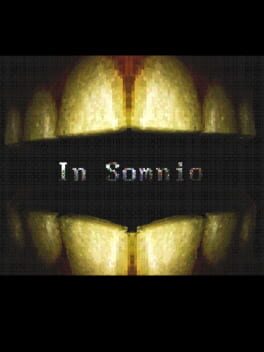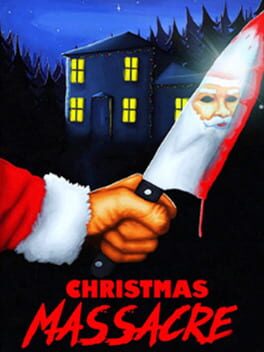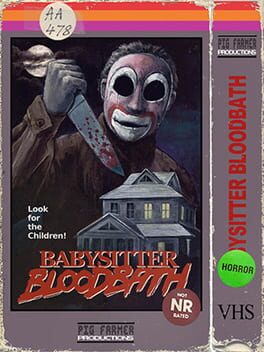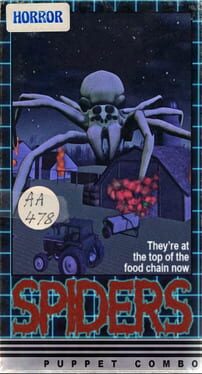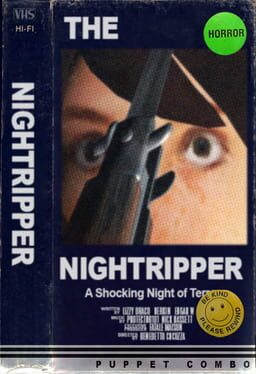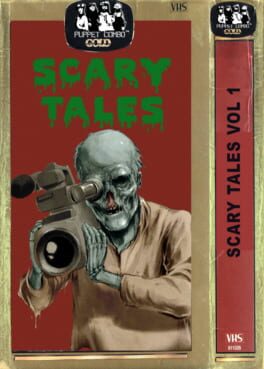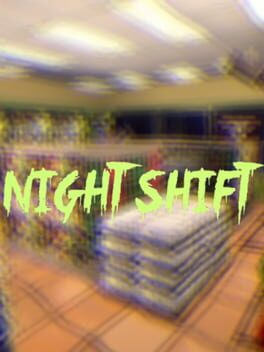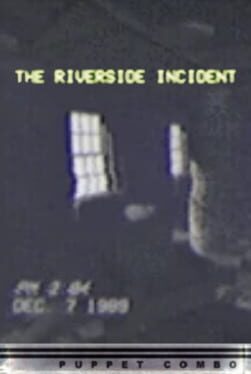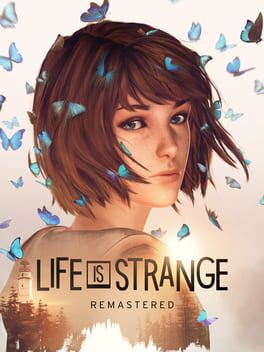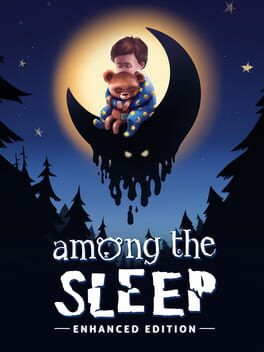Gameovah
2020
2019
2021
4.5/10
As in Feed Me Billy, we control a serial killer and mass murderer. The atmosphere is good and some levels are haunting.
By the way, the point system makes no sense, some mechanics are gratuitous (collectibles, seriously?) and the ending is terrible. It's also quite repetitive, the killings rapidly lose their weight and become just ludic performances. There is also no psychosexual tension whatsoever.
As in Feed Me Billy, we control a serial killer and mass murderer. The atmosphere is good and some levels are haunting.
By the way, the point system makes no sense, some mechanics are gratuitous (collectibles, seriously?) and the ending is terrible. It's also quite repetitive, the killings rapidly lose their weight and become just ludic performances. There is also no psychosexual tension whatsoever.
2013
2022
4.5/10
Intro - what a great premise and intriguing lore, what a good atmosphere
Finding the note - what a brilliant note. It reminds me of Signalis and its mixture of sci-fi, socio-political dystopia, and existential fiction. "They'll have their execution, I'll have my freedom", what a brilliant way to introduce Foucault into this world, what a mature and intelligent dealing with freedom, now I cannot but wonder where this game is going, how can my quest deal with these themes?
Rest of the game after 3 minutes - booooooooooring
Ending - wtf seriously
That's it. A very bad game built upon fascinating narrative premises.
Intro - what a great premise and intriguing lore, what a good atmosphere
Finding the note - what a brilliant note. It reminds me of Signalis and its mixture of sci-fi, socio-political dystopia, and existential fiction. "They'll have their execution, I'll have my freedom", what a brilliant way to introduce Foucault into this world, what a mature and intelligent dealing with freedom, now I cannot but wonder where this game is going, how can my quest deal with these themes?
Rest of the game after 3 minutes - booooooooooring
Ending - wtf seriously
That's it. A very bad game built upon fascinating narrative premises.
2018
2017
5/10
If games consist in traversing space more than inhabiting it, this provides an interesting take on playing as the designated victim of a serial killer by allowing you to traverse environment after environment, in a perpetual run.
The game already shows how good Puppet Combo is in crafting cinematic imageries and in re-enacting cinematic fixations (for example here you have the regular climaxes, indicating the beginning of killing/escaping sequences, that coincide with the arrival of the black sedan).
Aside from that, The Night Ripper is still quite overlong and repetitive - a good experiment and style exercise but just preparing for something more.
If games consist in traversing space more than inhabiting it, this provides an interesting take on playing as the designated victim of a serial killer by allowing you to traverse environment after environment, in a perpetual run.
The game already shows how good Puppet Combo is in crafting cinematic imageries and in re-enacting cinematic fixations (for example here you have the regular climaxes, indicating the beginning of killing/escaping sequences, that coincide with the arrival of the black sedan).
Aside from that, The Night Ripper is still quite overlong and repetitive - a good experiment and style exercise but just preparing for something more.
2019
5/10
It's just a brief playable horror story connecting four anthological episodes. It is quite harmless, it just confirm the talent Puppet Combo has in orchestrating haunting horror experiences in very small environments (here you have just an apartment and a basement).
The hole in the bathroom leading to an impossible space is a reference to Silent Hill 4: The Room that you just can't enjoy if you love survival horrors.
It's just a brief playable horror story connecting four anthological episodes. It is quite harmless, it just confirm the talent Puppet Combo has in orchestrating haunting horror experiences in very small environments (here you have just an apartment and a basement).
The hole in the bathroom leading to an impossible space is a reference to Silent Hill 4: The Room that you just can't enjoy if you love survival horrors.
2018
6.5/10
The game is scary and brilliant at building suspense. It does it by following the lead of Alfred Hitchcock.
As in Hitchcock, it all revolves around the disparity between the main characters' and players' awareness of what's actually going on in the fictional world. For Hitchcock, the best way to affect the viewer and involve her into the narrative world of the film is informing her about what are the actual risks the main characters face during a scene.
Here, the involvement of players doubly refers to that wanted by Hitchcock: first, we are fully aware that something bad is gonna happen to us and our character before the night shift ends. We are aware, in other words, that the game is a tribute to slasher films.
Spoilers ahead.
The game also toys with another awareness. At a certain point, we know for sure that someone has entered our shop. We find the backdoor opened and there's no one outside. The environment is made to make sure that, if no one is outside, the two small warehouses in the back are the only places to hide except for the shop. When you get back to the shop, you are sure that someone is in one of the warehouses. You are aware of that. And yet, you cannot but go there: the game doesn't end otherwise. The end is triggered by your actually getting there and being assaulted. Not only you are aware of the fact that someone's there waiting for you - you are also aware that, being within a fictional world, you can't avoid getting there and being slaughtered.
In this sense, the game brilliantly toys with both diegetic and extra-diegetic awareness, and transforms players in willingly stupid horror characters. The game is both a tribute to cinematic imageries and a fascinating reflection about what happens to those imageries when they become accessible. The inevitability of the evil is haunting on both the diegetic and extra-diegetic level.
The game is scary and brilliant at building suspense. It does it by following the lead of Alfred Hitchcock.
As in Hitchcock, it all revolves around the disparity between the main characters' and players' awareness of what's actually going on in the fictional world. For Hitchcock, the best way to affect the viewer and involve her into the narrative world of the film is informing her about what are the actual risks the main characters face during a scene.
Here, the involvement of players doubly refers to that wanted by Hitchcock: first, we are fully aware that something bad is gonna happen to us and our character before the night shift ends. We are aware, in other words, that the game is a tribute to slasher films.
Spoilers ahead.
The game also toys with another awareness. At a certain point, we know for sure that someone has entered our shop. We find the backdoor opened and there's no one outside. The environment is made to make sure that, if no one is outside, the two small warehouses in the back are the only places to hide except for the shop. When you get back to the shop, you are sure that someone is in one of the warehouses. You are aware of that. And yet, you cannot but go there: the game doesn't end otherwise. The end is triggered by your actually getting there and being assaulted. Not only you are aware of the fact that someone's there waiting for you - you are also aware that, being within a fictional world, you can't avoid getting there and being slaughtered.
In this sense, the game brilliantly toys with both diegetic and extra-diegetic awareness, and transforms players in willingly stupid horror characters. The game is both a tribute to cinematic imageries and a fascinating reflection about what happens to those imageries when they become accessible. The inevitability of the evil is haunting on both the diegetic and extra-diegetic level.
2018
7/10
For once in Puppet Combo's games, you play as the killer. It's a good chance to explore not only some tropes commonly associated with slasher's villains but, perhaps more interestingly, to re-enact and revisit come psychoanalytic implications of the genre.
Behind the bedroom of your avatar you find an archetypal womb-like space with a huge toothed mouth in the middle. It's that mouth that orders you to kill ('feed me, Billy!'). It's a fascinating take on the Freudian interpretation of slasher films: the urge to kill arises from a repressed/unprocessed feminine (it's also interesting how the mental uterine space is also depicted as liminal - to get there, you must traverse a womb-like corridor that toys with your perception of distance (and therefore reality).
When you kill your victims, you enact ritual: you approach them (in silence, striving to find your way into the woods), you kill them (climax: slow-motion, cacophony, and 3d models distorted and stretched by their death), and you get back to your truck (drone sound carpet and dissonant noises). The sequences soon assume a dream-like undertone. The parallel climax/orgasm, reinforced by the psychosexual interpretation we may give of the game as well as of slasher movies in general, is reinforced by the orgasmic audio-visual/interactive outburst the killings provide.
Brilliant.
For once in Puppet Combo's games, you play as the killer. It's a good chance to explore not only some tropes commonly associated with slasher's villains but, perhaps more interestingly, to re-enact and revisit come psychoanalytic implications of the genre.
Behind the bedroom of your avatar you find an archetypal womb-like space with a huge toothed mouth in the middle. It's that mouth that orders you to kill ('feed me, Billy!'). It's a fascinating take on the Freudian interpretation of slasher films: the urge to kill arises from a repressed/unprocessed feminine (it's also interesting how the mental uterine space is also depicted as liminal - to get there, you must traverse a womb-like corridor that toys with your perception of distance (and therefore reality).
When you kill your victims, you enact ritual: you approach them (in silence, striving to find your way into the woods), you kill them (climax: slow-motion, cacophony, and 3d models distorted and stretched by their death), and you get back to your truck (drone sound carpet and dissonant noises). The sequences soon assume a dream-like undertone. The parallel climax/orgasm, reinforced by the psychosexual interpretation we may give of the game as well as of slasher movies in general, is reinforced by the orgasmic audio-visual/interactive outburst the killings provide.
Brilliant.
7/10
This short experimental found-footage game does many things at the same time and it's one of the creepiest and most fascinating playable experiences I have ever had.
First, it's another example of how great Puppet Combo is in building haunting experiences through game and level design. Your character is slow and lame, you can't run, it's even hard to turn your head and watch the surroundings. Plus, the VHS filter make very hard to understand what you're actually watching. In this way, the game emphasises disempowerment - you are as vulnerable as you can be. Level design doesn't help: most levels can be summed up as a corridors, at the ends of which there are only closed doors. Once you reach on of the dead ends of the environment, you cannot but turn back and head to the other one. As you do this, you find you in an ankward position: at any time, someone/something can assault you from behind (the door is closed but, perhaps, not from both sides). At the same time, you cannot backtrack by looking at the closed door you found - the killer may also come from parts of the environment you still have to explore. In this way, the game enhances disempowerment and vulnerability through controls, visuals, movement, and level design in a quite simple but effective way.
Being a found footage, the game also leverages ambiguity. Being behind the camera, you don't know who you are. Being the action reduced to walking and recording things, you don't even know what you're doing. As most found footage movies, this can be a recording some unlucky victims made before getting slaughtered by some killer. If you have played other games by Puppet Combo, you kinda expect this. The first sections of the game could be you exploring abandoned buildings just for fun, and then being killed by who still inhabits them. But as you proceed things become more and more ambiguous. The meta-fictional framework of the found footage in this sense makes fun of both fear and purpose: you don't even know if you should be afraid, if you're the killer or a designated victim.
At the same time, you are also in a double position: you're both the subject who's recording and someone who watches the recorded material. The game makes explicit the twofoldness of every virtual experience: you're both acting and witnessing yourself acting. This becomes more and more interesting as the game progresses. At times, I have found myself recording detail and stuff to scare my audience - and I was the very audience of myself. When too scared to proceed, at times I stood still and wait some time by staring at walls or corners. In those moments, I found myself thinking not in terms of 'how scared I am, I cannot proceed, I will wait here for something to happen' but rather of 'how scary this tape is, what is this guy doing here staring at this corner??'. In this sense, the game provides perhaps one of the best reflections on found footage I have ever found, and especially played.
Spoilers ahead.
Last but not least, the game also engages with memory play in a very interesting way. The game features both a scream from the Ruth Price 911 call (as in Lisa Germano's 'A Psycopath'). The ending scene is also a direct reference to an actual recording of an arson in California. In both, you find yourself amid fictional and actual events, as in a re-enactment of tremendous crimes. In the very end, I was recording the fire and feeling like Benny in Haneke's Benny's Video. Another brilliant way to make you feel uncomfortable and to make your very agency ambiguous.
This short experimental found-footage game does many things at the same time and it's one of the creepiest and most fascinating playable experiences I have ever had.
First, it's another example of how great Puppet Combo is in building haunting experiences through game and level design. Your character is slow and lame, you can't run, it's even hard to turn your head and watch the surroundings. Plus, the VHS filter make very hard to understand what you're actually watching. In this way, the game emphasises disempowerment - you are as vulnerable as you can be. Level design doesn't help: most levels can be summed up as a corridors, at the ends of which there are only closed doors. Once you reach on of the dead ends of the environment, you cannot but turn back and head to the other one. As you do this, you find you in an ankward position: at any time, someone/something can assault you from behind (the door is closed but, perhaps, not from both sides). At the same time, you cannot backtrack by looking at the closed door you found - the killer may also come from parts of the environment you still have to explore. In this way, the game enhances disempowerment and vulnerability through controls, visuals, movement, and level design in a quite simple but effective way.
Being a found footage, the game also leverages ambiguity. Being behind the camera, you don't know who you are. Being the action reduced to walking and recording things, you don't even know what you're doing. As most found footage movies, this can be a recording some unlucky victims made before getting slaughtered by some killer. If you have played other games by Puppet Combo, you kinda expect this. The first sections of the game could be you exploring abandoned buildings just for fun, and then being killed by who still inhabits them. But as you proceed things become more and more ambiguous. The meta-fictional framework of the found footage in this sense makes fun of both fear and purpose: you don't even know if you should be afraid, if you're the killer or a designated victim.
At the same time, you are also in a double position: you're both the subject who's recording and someone who watches the recorded material. The game makes explicit the twofoldness of every virtual experience: you're both acting and witnessing yourself acting. This becomes more and more interesting as the game progresses. At times, I have found myself recording detail and stuff to scare my audience - and I was the very audience of myself. When too scared to proceed, at times I stood still and wait some time by staring at walls or corners. In those moments, I found myself thinking not in terms of 'how scared I am, I cannot proceed, I will wait here for something to happen' but rather of 'how scary this tape is, what is this guy doing here staring at this corner??'. In this sense, the game provides perhaps one of the best reflections on found footage I have ever found, and especially played.
Spoilers ahead.
Last but not least, the game also engages with memory play in a very interesting way. The game features both a scream from the Ruth Price 911 call (as in Lisa Germano's 'A Psycopath'). The ending scene is also a direct reference to an actual recording of an arson in California. In both, you find yourself amid fictional and actual events, as in a re-enactment of tremendous crimes. In the very end, I was recording the fire and feeling like Benny in Haneke's Benny's Video. Another brilliant way to make you feel uncomfortable and to make your very agency ambiguous.
7/10
On a surface level, a supernatural teen drama revolving around time travels. A thrilling investigation, an alleged apocalypse approaching, bullies all over, loss and addiction, parent issues, and implied love stories are the very core of the game's narrative (with perhaps too evident Donnie Darko vibes).
On a deeper level, it's about a bunch of hipsters that cannot accept that time passes for many reasons. Chloe can't accept that Rachel is gone as her own father; photography is seen as a tool to freeze (and turn back) time (and Blackwell students therefore are incapable of letting time pass - Kate cannot accept having being photographed during a party; Nathan and Victoria bully her and others through photos); Max cannot accept letting things (and most importantly, people) go. The gameplay (except for dozens of tedious environmental puzzles) revolves around this: you can unmake and remake your choices over and over but there is no ultimately good or bad choice - you increasingly get attached to past moments and past choices and yet this doesn't allow you to better face the present (see how powerless Max - and players - feel after Kate's sequence).
In the end, the game also reflects on destiny and free will. Spoilers ahead.
The final choice is great in this sense. There, players find themselves in the position of many protagonists in determinism-vs-free-will fictions. As Lily in Devs, as Miles in Across the Spider-Verse, as Donnie Darko, you must choose whether or not to accept that Chloe dies (as it should be, preventing the apocalyptic consequences of your defying time to save her). It's empowering and disempowering at the same time, as you basically have to accept having killed the only one you wanted to save or thousands of innocents. At the same time it's brilliant as you find yourself in the position of making a choice that's more than philosophical: accepting the world as it is (or should be?) or going against it. It's political, existential, and quite moving at the same time.
On a surface level, a supernatural teen drama revolving around time travels. A thrilling investigation, an alleged apocalypse approaching, bullies all over, loss and addiction, parent issues, and implied love stories are the very core of the game's narrative (with perhaps too evident Donnie Darko vibes).
On a deeper level, it's about a bunch of hipsters that cannot accept that time passes for many reasons. Chloe can't accept that Rachel is gone as her own father; photography is seen as a tool to freeze (and turn back) time (and Blackwell students therefore are incapable of letting time pass - Kate cannot accept having being photographed during a party; Nathan and Victoria bully her and others through photos); Max cannot accept letting things (and most importantly, people) go. The gameplay (except for dozens of tedious environmental puzzles) revolves around this: you can unmake and remake your choices over and over but there is no ultimately good or bad choice - you increasingly get attached to past moments and past choices and yet this doesn't allow you to better face the present (see how powerless Max - and players - feel after Kate's sequence).
In the end, the game also reflects on destiny and free will. Spoilers ahead.
The final choice is great in this sense. There, players find themselves in the position of many protagonists in determinism-vs-free-will fictions. As Lily in Devs, as Miles in Across the Spider-Verse, as Donnie Darko, you must choose whether or not to accept that Chloe dies (as it should be, preventing the apocalyptic consequences of your defying time to save her). It's empowering and disempowering at the same time, as you basically have to accept having killed the only one you wanted to save or thousands of innocents. At the same time it's brilliant as you find yourself in the position of making a choice that's more than philosophical: accepting the world as it is (or should be?) or going against it. It's political, existential, and quite moving at the same time.
5.5/10
It has some good design ideas (the diegetic pause menu, using the bear as a flashlight, crawling as a way to move faster); a great concept (a horror game from the perspective of a child); and some scary sections (especially the first one, in which you stare at dark corners and figure and project scary monster onto them as your avatar). The childish imagery and aesthetics is quite good, although not particularly inspired.
However:
- the gameplay is quite redundant and revolves around environmental puzzles, with a very old structure resembling ps1 games.
- The narrative is surprisingly weak and the ending seems rushed.
- By providing dreamlike and fantasy environments too soon, it rapidly loses its reality/dream ambiguity.
It has some good design ideas (the diegetic pause menu, using the bear as a flashlight, crawling as a way to move faster); a great concept (a horror game from the perspective of a child); and some scary sections (especially the first one, in which you stare at dark corners and figure and project scary monster onto them as your avatar). The childish imagery and aesthetics is quite good, although not particularly inspired.
However:
- the gameplay is quite redundant and revolves around environmental puzzles, with a very old structure resembling ps1 games.
- The narrative is surprisingly weak and the ending seems rushed.
- By providing dreamlike and fantasy environments too soon, it rapidly loses its reality/dream ambiguity.
